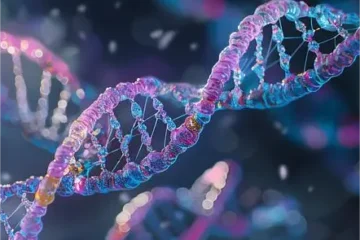How Stem Cells Work After Intravenous Injection

When we administer stem cells intravenously in high concentrations, these cells enter your bloodstream and are distributed throughout your body. This approach allows the stem cells to naturally “scan” the body through a mechanism called cell-to-cell communication.
Cell-to-Cell Communication and Homing Signals
Your pancreas, especially in cases of pancreatic damage (whether caused by autoimmune processes, chronic inflammation, or diabetes-related degeneration), releases distress signals in the form of biochemical molecules — such as cytokines, chemokines, and growth factors. These molecules are recognized by specific receptors on the surface of mesenchymal stem cells (MSCs).
This mechanism is known as homing, where the stem cells are attracted towards the source of injury by these molecular signals, particularly via gradients of stromal-derived factor-1 (SDF-1) and its receptor CXCR4 on stem cells.
Integration into Pancreatic Tissue
After reaching the pancreas, stem cells interact with the local microenvironment, particularly the damaged regions of the islets of Langerhans — the specialized clusters of cells responsible for producing insulin.
- Paracrine Effects: One of the primary regenerative mechanisms of MSCs is through paracrine signaling — stem cells secrete beneficial molecules such as vascular endothelial growth factor (VEGF), hepatocyte growth factor (HGF), and interleukin-10 (IL-10), which reduce inflammation, promote blood vessel growth (angiogenesis), and support cell survival.
- Direct Differentiation: In some cases, a portion of the stem cells can differentiate into pancreatic progenitor-like cells. Studies have shown expression of pancreatic markers such as PDX1, Nkx6.1, and insulin gene (INS) in stem cells under specific conditions.
- Immunomodulation: MSCs also exert an immunomodulatory effect, reducing the autoimmune attack (especially in Type 1 Diabetes) by suppressing pro-inflammatory T-cells (Th1, Th17) and promoting regulatory T-cells (Treg), creating a more favorable environment for pancreatic healing.
Result: Regeneration of Insulin-Producing Capacity
Thanks to these mechanisms, stem cells can contribute to:
- Regeneration of islet structures, aiding in the reconstruction of the beta cells that produce insulin.
- Partial or even significant restoration of pancreatic function, leading to improved blood sugar control, reduction in insulin needs, or in some cases remission-like outcomes.
- Reduction of systemic inflammation, contributing to improved overall metabolic health.
It is important to understand that while stem cell therapy holds significant regenerative potential, the exact degree of improvement varies from patient to patient, depending on the stage of pancreatic damage, the cause (Type 1 vs Type 2 Diabetes), and individual response to therapy.
Why High Concentrations Matter
Higher doses of stem cells (for example, 80 million cells) significantly increase the chances of effective homing, engraftment, and regeneration. A larger number of cells means:
- More paracrine activity.
- Greater anti-inflammatory effects.
- Stronger support for tissue remodeling and regeneration.
This is why we often recommend higher concentrations in patients with advanced or long-term pancreatic damage, as it enhances the biological activity and therapeutic outcomes.


